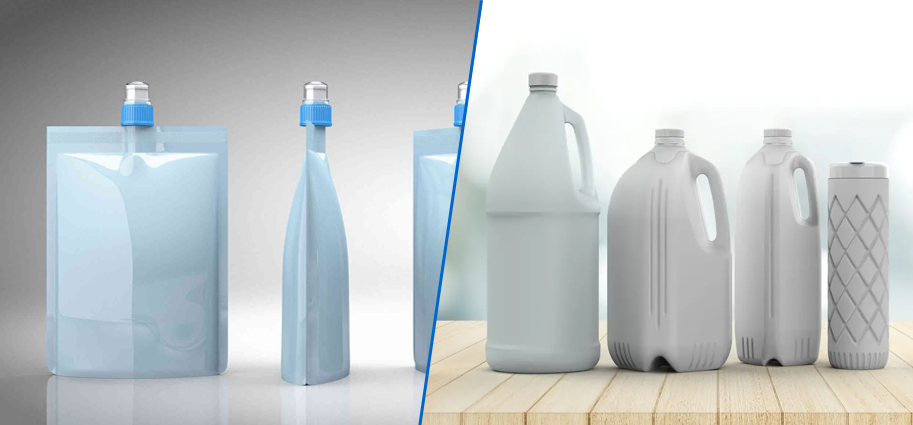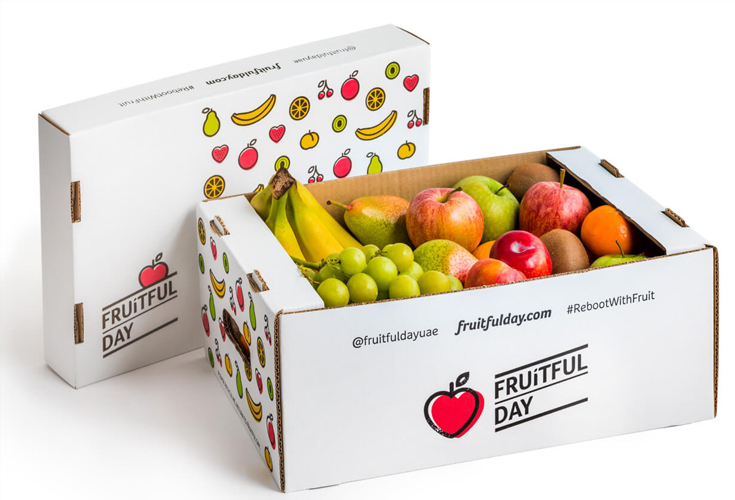Classification of product packaging
Classification of product packaging
In the world, there are many countries that have developed the packaging industry. People classified packaging by mainly two criteria: the manufacturing materials and purpose as well as the effect of the packaging on products and product circulation.
In Israel, the product packaging is divided by manufacturing materials. Therefore, the packaging is classified into plastic packaging, paper packaging and carton, tinplate and aluminum packaging, glass packaging, and others (mainly wood).
In Germany and the Netherlands, they classify product packaging into two basic criteria:
>>> Why is product packaging a vital element for the success of a brand
.jpg)

.jpg)
>>> 6 Variety of rigid box styles for gifts

.jpg)
This is the primary and popular classification of many researchers, production managers, businessmen, and environmental managers. According to this standard, the packaging is named after the materials making it. Consists of seven different groups:
>>> 3 Advantages of wooden wine boxes
.jpg)
.jpg)
Packaging with artificial and synthetic materials such as packaging made from polymer, artificial rubber, plastic films, and hard plastic packaging ... Moreover, it also has a combination of many other materials in order to produce the packaging which ensures the requirements for storage and transportation of goods.
>>> Custom E-commerce ready packaging and how to keep customers engaged
(1).jpg)
Although the classification of packaging is relative, each classification method has a certain meaning in the study of production, use, management, and measures with a view to promoting the functions of the packaging for the national economy and the production and business activities of each enterprise.
KHANG THANH - HOUSE OF PACKAGING
Tel: +84 (0) 77 8878 222
Email: info@khangthanh.com
Classification of product packaging in several countries in the world
In Israel, the product packaging is divided by manufacturing materials. Therefore, the packaging is classified into plastic packaging, paper packaging and carton, tinplate and aluminum packaging, glass packaging, and others (mainly wood).In Germany and the Netherlands, they classify product packaging into two basic criteria:
- Standard 1: Classification of packaging according to manufacturing materials including glass, iron and steel, aluminum, plastic, and mixed materials (mostly cartons);
- Standard 2: Classification according to the use purposes including commercial packaging (consisting of bags, boxes, bottles, and baskets), outer packaging (second), intermediate packaging (used for advertising), and transport packaging including trunks and bags (third)...
>>> Why is product packaging a vital element for the success of a brand
.jpg)
The classification of packaging according to various criteria in Vietnam
According to usage criteria: packaging is divided into two types
- Inner packaging: this type of packaging that is used to pack goods directly contacts with the product as well as is often sold with a product. Thus, its value is added to the value of the product sold.
- Outer packaging (or shipping packaging): this kind has the effect of protecting the intact quantity and quality of products with the aim of serving the transport of products from the production place to the consumption place. It depends if the type of packaging that can be reused or not, its value is immediately or partially calculated into the value of the product consumed.

According to the number of uses: packaging is divided into two types
- Single-use packaging: this is the kind of packaging used with the product. It means that it is merely used for the circulation of the product when the product is manufactured until the product is directly consumed. Therefore, its cost is totally calculated into the value of the product.
- Reusable packaging: this type is capable of serving several times of product circulation, so it is likely to be reused. Reusable packaging usually consists of outer packaging and inner packaging that is manufactured from sustainable materials (such as metal and synthetic plastic...). Their value is partially calculated into the value of the products consumed.
.jpg)
Classification by hardness (compressive strength) including hard packaging, semi-rigid packaging, and soft packaging
- Hard packaging: there is an ability to withstand mechanical impacts from the outside, the weight of the product inside, and keeping its shape when carrying out containing, transporting, and unloading.
- Semi-rigid packaging: this type has entire solidity when you conduct to contain and transport goods; however, it will be limited to a certain extent. It can be deformed under the weight of the goods, the impact of pressure when piling the goods, and mechanical impact (collision and vibration) during transportation.
- Soft packaging: it is easily deformed due to the impact of cargo weight and mechanical impact from the outside, so it can be changed from its original shape. Though it is resistant to impacts and collisions during the loading and unloading process, this type is a means to transmit such bad effects to the goods. Hence, soft packaging is generally used for granular and powdered which are unaffected by the mechanical impact on product quality.
>>> 6 Variety of rigid box styles for gifts

Classified by packaging specialization
- Common packaging: it is the packaging that can be used to contain many kinds of various products.
- Specialized packaging: only used for packaging and containing a specific type of product which is physical and chemical properties as well as special states. For example gases, toxic chemicals, and inflammable substances...
.jpg)
Classified by manufacturing materials
This is the primary and popular classification of many researchers, production managers, businessmen, and environmental managers. According to this standard, the packaging is named after the materials making it. Consists of seven different groups:
- Wooden packaging
>>> 3 Advantages of wooden wine boxes
.jpg)
- Metal packaging:
- Wrapping with paper, carton, and board
.jpg)
- Packaging made of glass and ceramics
- Textile packaging
- Rattan and bamboo packaging
Packaging with artificial and synthetic materials such as packaging made from polymer, artificial rubber, plastic films, and hard plastic packaging ... Moreover, it also has a combination of many other materials in order to produce the packaging which ensures the requirements for storage and transportation of goods.
Classified by the origin of packaging
- Product packaging of manufactories: is the type of packaging used to pack products in the product consumption stage of the enterprise.
- Product packaging of commercial enterprises: is a type of packaging dividing goods into lots, synchronously assembled, and transported goods in the business of commercial enterprises. In addition to the above criteria, it is possible to classify packaging according to other criteria such as water permeability, quality level, the relative weight of the packaging, and geometric designs.
>>> Custom E-commerce ready packaging and how to keep customers engaged
(1).jpg)
Although the classification of packaging is relative, each classification method has a certain meaning in the study of production, use, management, and measures with a view to promoting the functions of the packaging for the national economy and the production and business activities of each enterprise.
KHANG THANH - HOUSE OF PACKAGING
Tel: +84 (0) 77 8878 222
Email: info@khangthanh.com

